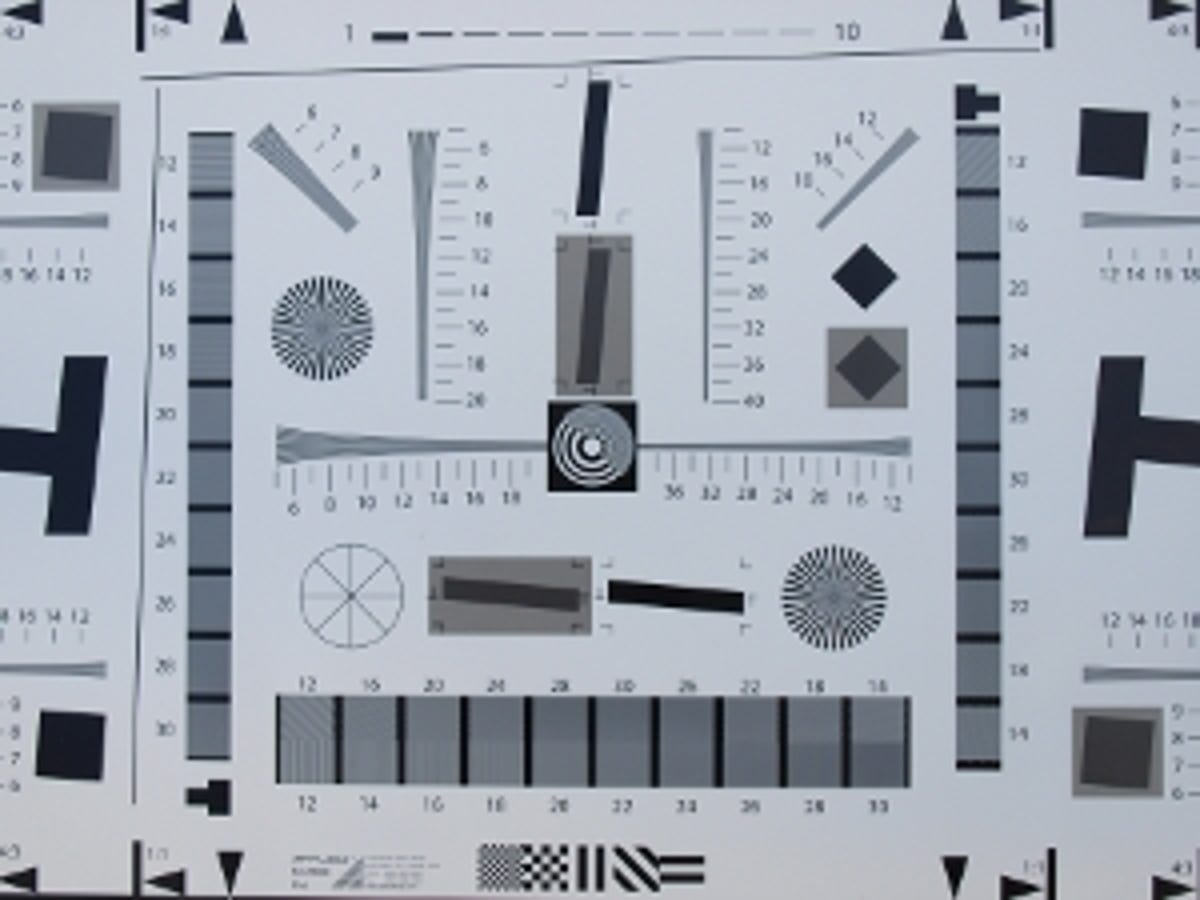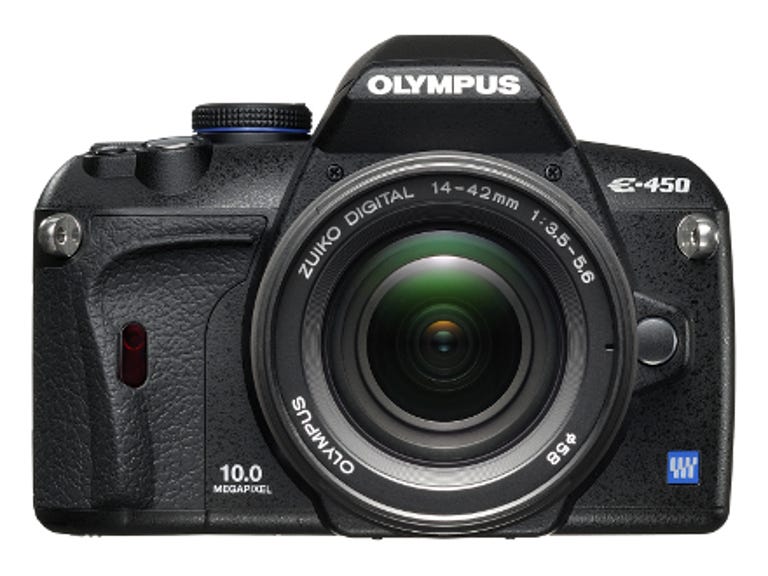 Why You Can Trust CNET
Why You Can Trust CNET Olympus E-450 review: Olympus E-450
The 10-megapixel E-450 makes a number of subtle but welcome improvements over its predecessor, the E-420, and, as a result, is a worthwhile entry-level digital SLR. Offering good picture quality, comfortable handling and diminutive dimensions, it's a strong contender if you're looking to step up from a compact
An update to the E-420, the 10-megapixel E-450 is Olympus' key entry-level digital SLR, and one of the most affordable available. It's also the smallest fully-featured dSLR with an optical viewfinder that you can currently find. It costs around £315 for the body only, £390 with the 14-42mm standard kit lens, and £450 with the 14-42mm and 40-150mm lenses.
The Good
The Bad
The Bottom Line
Dinky dSLR
While the E-450 may not be as dinky as Panasonic's Micro Four Thirds-based Lumix DMC-G1, it comes very close. Also, while the DMC-G1 relies on a rather unsatisfactory electronic viewfinder, the E-450 has an optical viewfinder, which, while quite small and cramped, is still much clearer for composition and focusing than the very best EVF. Combine those facts with the inclusion of a sensor of the same size as the DMC-G1's, albeit of a slightly lower resolution, and the E-450 starts to look very attractive.

If there's a fly in the ointment, it's that the standard kit lens, the 14-42mm zoom, is slightly bigger than the Micro Four Thirds alternatives, but it's not a massive deal.
Comfortable handling
The E-450's body, layout and menu system benefit from incremental improvements made over the course of several updates since the release of the E-400 in 2006. The E-450 lacks a substantial handgrip, but, thanks to its lightweight body and some well-shaped grips to the front and rear, it's quite comfortable to hold.
Used with the optional 25mm f/2.8 (50mm-equivalent) 'pancake' kit lens, the E-450 offers some of the sweetest handling you can find. Add on the much larger pro zoom lenses and handling takes a hit. If only Olympus had made a battery pack to offset those front-heavy optics, as it did with the E-620.
Good pictures
Perhaps the most important difference between the E-420 and the E-450 is that the later model uses a relatively new image processor, TruePic III+. Don't think this simply adds the over-hyped Art Filters (there are only three on the E-450: the super-saturated 'pop art', 'soft focus' and 'pin hole') -- the extra number-crunching power brings noticeable benefits to picture quality. There are fewer white-balance inaccuracies for one, and slightly lower noise levels throughout the range, with maximum ISO 1,600 having better colour and detail than usual, with fewer distracting coloured speckles. It's a much more sensible balance. Bravo.
Olympus has even managed to extend the dynamic range of JPEGs produced by the camera. Where the E-420 would clip highlights, should you take your eye off the histogram (real-time in live view), the E-450, with the 'auto gradation' option enabled, can largely be left alone to make complex auto-exposure decisions. That's great news for newbies or anyone looking to grab shots without constantly adjusting the camera's settings. Shadow Adjustment Technology helps lift detail in the shadows, but it doesn't have the same latitude as Nikon's Active D-Lighting options, found on the pricier D5000.
One of our gripes with the E-420 still persists with the E-450 -- namely, the tardy contrast-detection autofocus in live view. It's not much slower than rivals, if at all, but it's still frustrating. Still, there are times when live view is the best option, and the E-450's operation is slick and much quieter than that of rivals.
Olympus has also missed an marketing opportunity in calling the E-450's 69mm (2.7-inch ) screen a HyperCrystal II LCD panel, like that of the earlier E-420. In fact, the E-450's LCD is both brighter and clearer.
Conclusion
As a step up from a compact camera, the Olympus E-450 is a strong contender for your cash. Pentax offers the equally appealing K200D, which features the same sensor resolution but adds a very attractive body-integrated anti-shake system. That model uses four AA batteries, though, and is pretty heavy as a result. It also lacks live view and has an even less sophisticated phase-detection (viewfinder-based) AF system than the three-point AF module found on the E-450. Alternatively, you could consider the new Nikon D3000 or perhaps the Sony Alpha DSLR-A230, but both these models are new and, as yet, untested.
Edited by Charles Kloet
